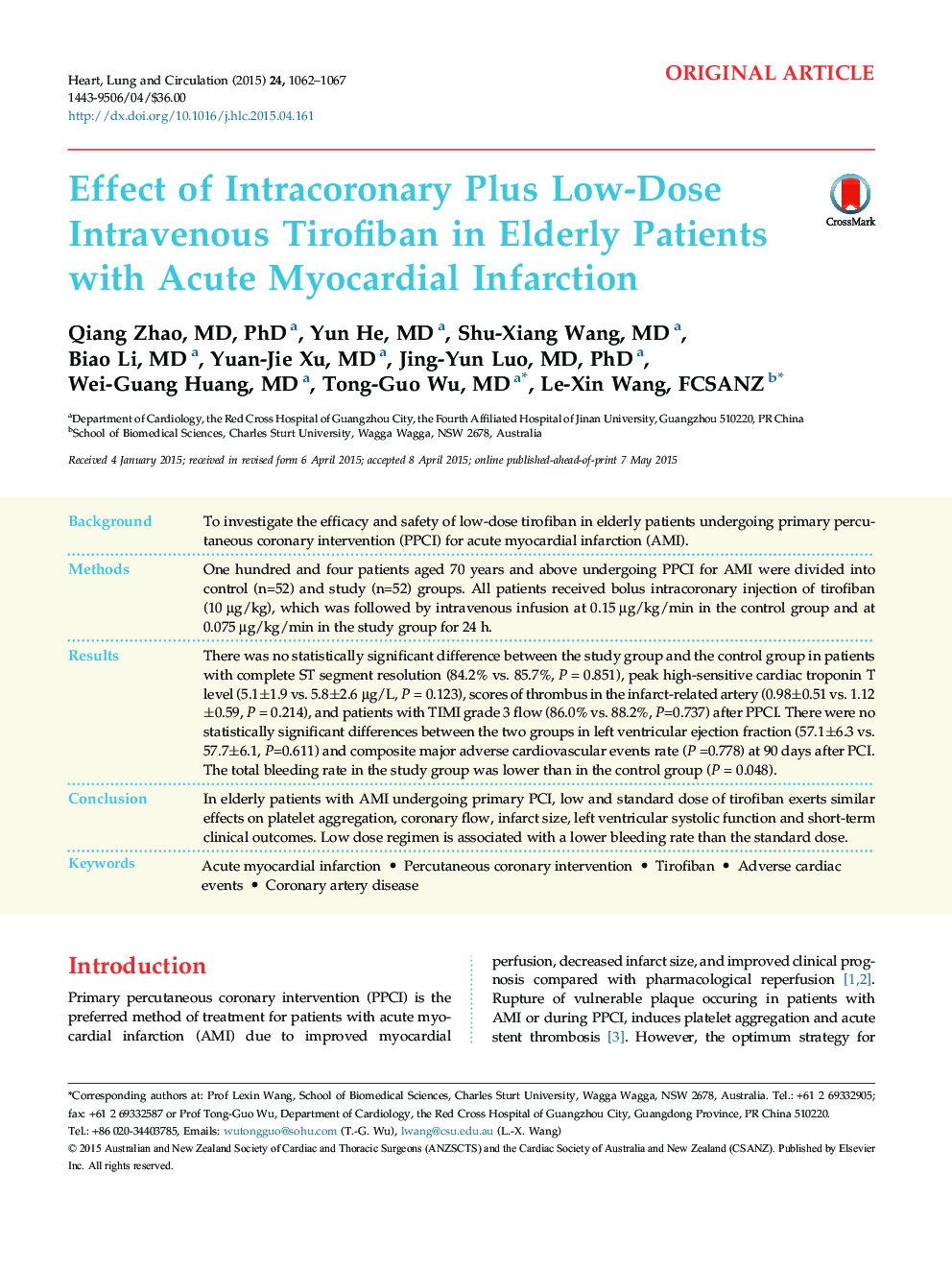| Article ID | Journal | Published Year | Pages | File Type |
|---|---|---|---|---|
| 2917379 | Heart, Lung and Circulation | 2015 | 6 Pages |
BackgroundTo investigate the efficacy and safety of low-dose tirofiban in elderly patients undergoing primary percutaneous coronary intervention (PPCI) for acute myocardial infarction (AMI).MethodsOne hundred and four patients aged 70 years and above undergoing PPCI for AMI were divided into control (n=52) and study (n=52) groups. All patients received bolus intracoronary injection of tirofiban (10 μg/kg), which was followed by intravenous infusion at 0.15 μg/kg/min in the control group and at 0.075 μg/kg/min in the study group for 24 h.ResultsThere was no statistically significant difference between the study group and the control group in patients with complete ST segment resolution (84.2% vs. 85.7%, P = 0.851), peak high-sensitive cardiac troponin T level (5.1±1.9 vs. 5.8±2.6 μg/L, P = 0.123), scores of thrombus in the infarct-related artery (0.98±0.51 vs. 1.12±0.59, P = 0.214), and patients with TIMI grade 3 flow (86.0% vs. 88.2%, P=0.737) after PPCI. There were no statistically significant differences between the two groups in left ventricular ejection fraction (57.1±6.3 vs. 57.7±6.1, P=0.611) and composite major adverse cardiovascular events rate (P =0.778) at 90 days after PCI. The total bleeding rate in the study group was lower than in the control group (P = 0.048).ConclusionIn elderly patients with AMI undergoing primary PCI, low and standard dose of tirofiban exerts similar effects on platelet aggregation, coronary flow, infarct size, left ventricular systolic function and short-term clinical outcomes. Low dose regimen is associated with a lower bleeding rate than the standard dose.
